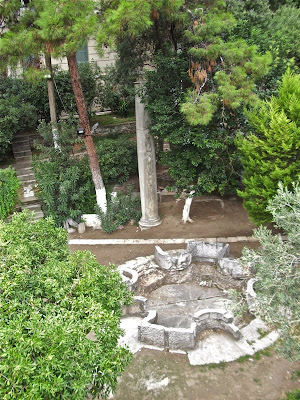Last week, Ana and I went down into the city to find some items for the babies' upcoming baptisms. While downtown, we passed by the Catacombs of St. John. I can't find any information on this site in any of the usual books, but the site's keeper gave a full run-down of its history, which is quite remarkable.
According to her, it was once the site of an ancient pagan temple, one column of which you can still see standing in the bottom three photos. Next to the temple was also a bath complex. This part of the story I was not clear about, but it seems that perhaps the area had become abandoned at some point, or that there were catacombs attached to this complex that were rather isolated. In any event, this was where the city's first Christians met. The Christian community here, we should note, was founded by the Holy Apostle Paul himself in the 40s AD and has had a continuous presence until our very day.
Ana and I walked in the tunnels underneath the modern-day church and saw what once served as the Holy Altar (see photo above).
The underground complex is basically a series of very small rooms (see photo above). There is also a natural spring in one room, which presumably was the reason there was originally a bath here.
After the triumph of Christianity in the fourth century, a baptistery was built on the site of the spring, which you can see in the photo above (and below, to the right of Ana's shoulder). Two photos above, the potted plants sit on the remnants of the walls of that baptistery. We were told that this baptistery was reserved for the aristocracy, and that St. Emperor Theodosius the Great was baptized here in 380, which according to this information on the life of the saint, seems quite likely.






No comments:
Post a Comment